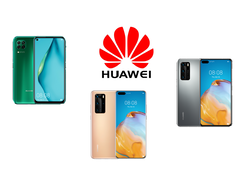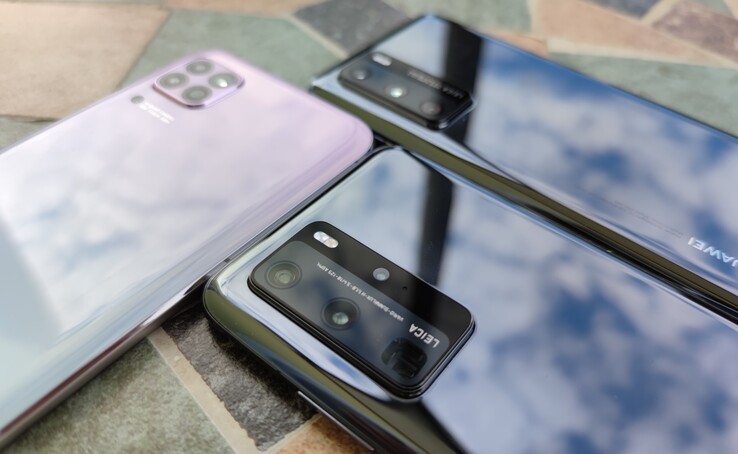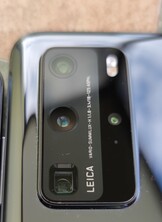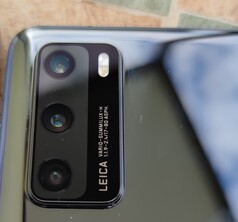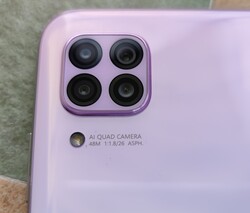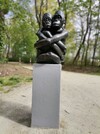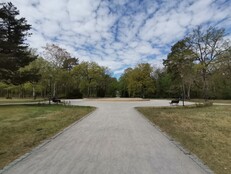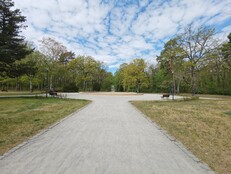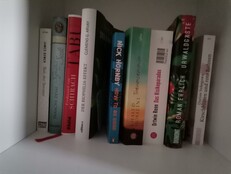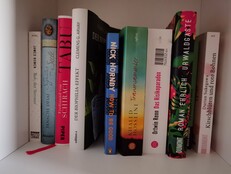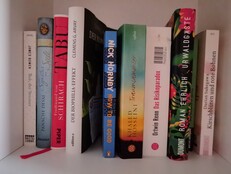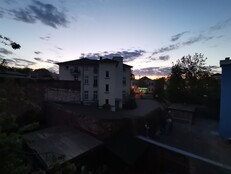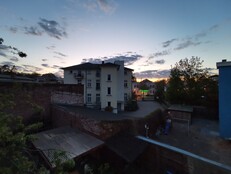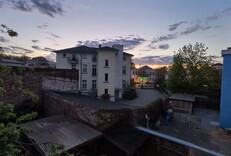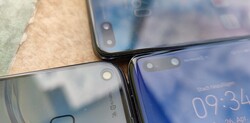Photography is particularly in focus with the P series from Huawei, but there are big technical differences between the P40 smartphones at times, and the recommended retail prices of the Huawei smartphones also vary greatly. For the cheapest model of the P40 trio, the Chinese manufacturer has established an MSRP of 299 Euros (~$250), which is followed by the P40 at 799 Euros (~$871) and the P40 Pro, for which a price of 999 Euros (~$1,089) has been set.
But how big are the differences between the P40 models in terms of photo quality? We'll compare the Huawei P40 Pro, P40 and P40 Lite using different photo subjects and lighting conditions. But first, here is a brief summary of the technical specifications of the installed camera modules.
All Huawei smartphones in a camera setup comparison
The main camera of the P40 Pro (standard wide angle, 1/1.28", f/1.9) uses the brand new RYYB sensor with a resolution of 50 MP. With a size of 1/1.28", it is larger than on the Samsung Galaxy S20 Ultra and offers much larger pixels (1.22 µm). In addition, there is a 40 MP ultra wide-angle lens (f/1.8, OIS), a 12 MP periscope camera with 125 mm of focal length (f/3.4, RYYB, OIS) for a lossless 5x zoom and a 3D depth camera.
In comparison to the Huawei P40 Pro, the "normal" P40 has to deal with some shortcomings. In the cheaper Huawei flagship, the wide-angle lens has significantly fewer pixels (16 MP), and there is also no periscope zoom. The 3D depth camera has also been omitted. What remains is the RYYB main sensor with 50 MP but without an optical image stabilizer. The 8 MP telephoto lens has a focal length of 80 mm, a 5x hybrid zoom and OIS.
The quad-camera setup of the Huawei P40 Lite consists of a 48 MP autofocus lens with a 17 mm focal length, a fast f/1.8 aperture and 5x digital zoom. In addition, there is an 8 MP ultra wide-angle camera (120°, f/2.4), a 2 MP macro camera (f/2.4) and a 2 MP bokeh lens (f/2.4) that collects depth information.
| Huawei P40 | Huawei P40 Pro | Huawei P40 Lite | |
|---|---|---|---|
| Rear camera setup | Camera 1: 50 MP, f/1.9, phase detection AF (dual pixel); camera 2: 16 MP, f/2.2, wide-angle lens; camera 3: 8 MP, f/2.4, OIS, telephoto lens | Camera 1: 50 MP (standard wide-angle, 1/1,28", 1,22 µm, f/1.9, RYYB color filter, octa-PDAF, OIS), camera 2: 40 MP (ultra-wide cine lens, 1/1.54", f/1.8, OIS), camera 3: 12 MP (5x periscope zoom, f/3.4, RYYB, OIS), camera 4: 3D depth camera | Camera 1: 48 MP (PDAF, f/1.8 aperture); camera 2: 8 MP (ultra wide-angle camera), camera 3: 2 MP (macro camera), camera 4: 2 MP (bokeh camera) |
| Front-facing camera setup | 32 MP, f/2.0; ToF (camera 2) | 32 MP (autofocus, f/2.2), IR camera | 16 MP, f/2.0 aperture |
| Software version | 10.1.0.114 | 10.1.0.114 | 10.1.0.136 |
Daylight photography with the Huawei P40 Lite, P40 and P40 Pro
With very well-lit photo subjects, the two expensive Huawei P40 mobile phones aren't that different in terms of camera quality at a first glance. Pictures taken with the P40 seem to show the most contrast, but there are few differences in terms of color management compared to the Pro model. The focus is better on the P40 and the P40 Pro in comparison to the Lite model, but it is also not right at times on both of the significantly more expensive Huawei models (see subject No.4). The deficits in terms of image sharpness at the edges of the photos taken with the P40 Pro are noticeable, and even the P40 Lite appears sharper here at times, but the lighting on the Pro model is better achieved in return.
The P40 Lite has visible exposure problems; photos often appear too bright and partially overexposed in sunlight. Even in very good lighting conditions, the details in the photos are visibly less than with the larger models, the P40 and P40 Pro. The sharpness in the photos of the P40 Lite is less pronounced, but pictures often appear over-sharpened. The softer transitions of the P40 and P40 Pro look more natural but also show slightly less contrast, since the over-sharpening of the Lite model causes the image contrast to increase as well. However, the dynamic range is on a good level and often not much worse than with the Pro model, which is three times as expensive.
The cheapest P40 smartphone also does a good job in portrait photos. As expected, the differences between the two top models from the Chinese manufacturer are smaller, but the bokeh effects are not achieved well with our kitten subject - we almost like the results of the P40 Lite a bit better here.
Photos taken with the ultra wide-angle lens show a visible loss of detail on all Huawei smartphones. However, the price differences become clearer based on the photo quality than with the main cameras - especially between the P40 and P40 Pro. The latter has good sharpness - even at the edges - and the dynamic range is also higher than on the Huawei P40. The ultra wide-angle photos of the P40 Lite can't keep up with those of its two higher-specced counterparts in terms of dynamic range and detail. In addition, the brightness in the pictures is also lower.
The quality of the Lite model is very poor when it comes to zoom photos. Due to the digital zoom, the cheapest P40 smartphone has visible problems with the reproduction of details, and the sharpness is often poor too. Photos taken with high magnification look unnatural and are actually hardly usable. Although the P40 only has a 5x hybrid zoom, the photos taken with the 8 MP camera are appealing. Even if the P40 isn't on par with the zoom specifications of the Pro model, details are reproduced a touch better here; the 5x-zoom range, in particular, is on a similar level.
Night-time photography with the Huawei smartphones
Under slightly poorer lighting conditions, the visibly two-tiered society becomes more evident when it comes to the main cameras. The two P40 smartphones with the RYYB sensors can convince with their image sharpness and a distinct brightness. The Pro model, in particular, hardly produces any noise, even with the very poorly lit book subject. Overall, the photos taken with the P40 Pro and P40 are very similar, whereby the photos of the Pro version deliver slightly better results.
However, both the P40 and the P40 Pro reveal some unusual weaknesses in low-light photography at times; especially the house subject with the illuminated pharmacy sign is badly captured and heavily overexposed, even if night mode delivers respectable results - this works much better. There are also some image errors with the street subject, which occur equally in both of the manufacturer's top models, such as the window area directly next to the street lamp.
The Lite model is completely outclassed in this discipline. The weaknesses of the Huawei mid-range smartphone manifest themselves in the dark. The P40 Lite can hardly transfer any image information to the sensor in very low light.
If the lenses are used for ultra wide-angle photos in the dark, the differences between the Huawei smartphones become even clearer. As expected, the Lite model takes by far the least-detailed photos in this discipline. Especially the image sharpness and lighting are on a poor level.
But the P40 is also far from having the low-light skills of the Pro model. The Huawei P40 Pro's ultra wide-angle lens is the least noisy; it captures comparatively much light and therefore image details. It currently doesn't get any better in the smartphone segment.
There are also big differences between both high-end smartphones and the P40 Lite in terms of zoom photos. Even at twilight, the digital zoom of the Lite model makes the pictures blurry and noisy.
However, the qualitative differences between the P40 and P40 Pro are less than with the ultra-wide angle lenses. Although the most-expensive Huawei mobile phone delivers the sharpest photos in our test, the normal P40 can certainly keep up at a 5x magnification - provided the lighting conditions aren't extremely bad.
Photos taken with the front-facing cameras of the Huawei P40 Lite, P40 and P40 Pro
The front-facing camera of the P40 has a resolution of 32 MP and offers autofocus. The Pro model can also make use of this camera setup but only with an f/2.2 aperture. The P40 Lite's 16 MP selfie camera offers an f/2.0 aperture like the P40.
Just last year, the affordable P30 Lite scored well compared to its high-end competitors with an amazingly good front-facing camera - this year, this is only the case in daylight. The P40 Lite has great difficulty producing sharp photos in the dark. On the other hand, a red tint is noticeable in poor lighting conditions with the P40 Pro. Skin tones look unnatural here, and the results are almost useless. With low-light selfies, the P40 delivers better results.
Verdict - Clear role distribution of the Huawei smartphones
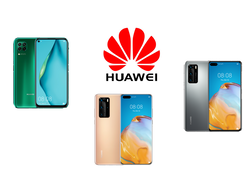
With the P40 and P40 Pro, Huawei is once again putting two first-class camera smartphones on the shelves, but this year, the Pro model operates on a different level in one discipline: Ultra wide-angle photography. What the Chinese manufacturer retains in terms of sharpness, detail and brightness in the P40 Pro's photos is first-class. This year, the normal P40 model doesn't come close to achieving this - though neither does any other 2020 smartphone from the first half of the year.
Nevertheless, the Huawei P40 can score points over the Pro variant, namely in areas where the P40 Pro shows unexpected shortcomings. The problem with the lack of sharpness at the edges of the 50 MP camera, the sometimes unclean bokeh effects and the unnatural-looking selfie photos in low light should be mentioned here.
Weaknesses in the Huawei P40 Pro's act make the P40 quite attractive for budget-conscious shoppers without ultra wide-angle ambitions.
To which conclusions does our camera comparison of the P40 series lead? If you don't place much value on the ultra wide-angle camera and mainly use your smartphone to take pictures without an enormous magnification, you don't necessarily have to go for the P40 Pro. Although the Lite model of the P series also has a special focus on photography, the Huawei P40 Lite is unable to provide a positive surprise in any discipline, and buyers will have to put up with considerable qualitative disadvantages.




